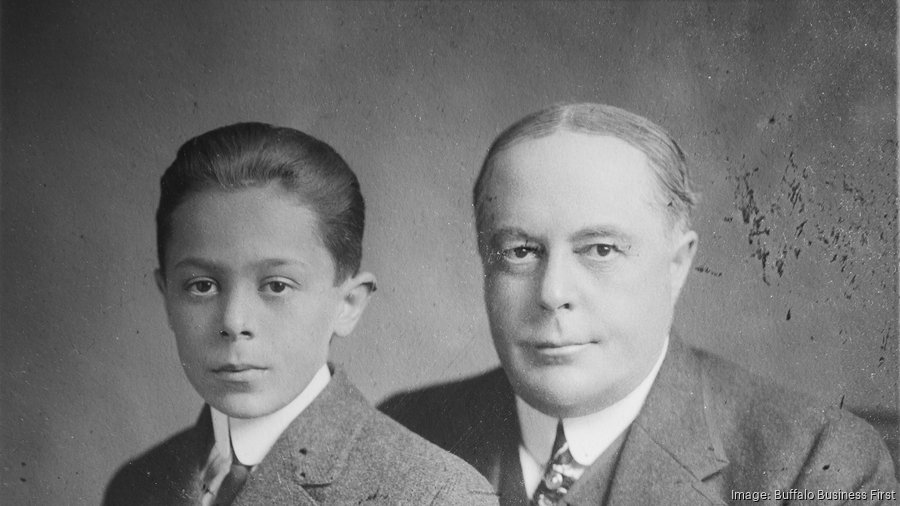Twice recently, the legacy of Seymour Knox was recognized. Groundbreaking ceremonies were held Nov. 22 for the $162 million expansion of Albright-Knox Art Gallery, the cultural institution that his family has supported for four generations.
Then on Dec. 2, the Buffalo Sabres honored the Knox family on Founders Night, marking 50 years to the day that the National Hockey League awarded the Buffalo franchise to brothers Seymour Knox III and Northrup Knox, grandsons of Seymour Knox.
“As time has moved on, our legacy, which began with my great-grandfather, hasn’t been in the forefront but everything we’ve done is because of him,” Seymour Knox IV said.
The family name is widely known because of the art gallery and the Sabres, but consider that Seymour Knox’s widow, Grace, donated seed money to develop the Main Street campus of University at Buffalo. And Seymour Knox II was on UB’s board of trustees, which decided to add the Amherst campus in the 1960s.
“Think how many people, how many lawyers, doctors and engineers, have graduated from UB because of those decisions,” said Seymour Knox IV.
Robert Gioia, president of the John R. Oishei Foundation, said the legacy of Seymour Knox may be understated and underappreciated by today’s standards.
“Mr. Knox was quite a valuable partner in the growth of Western New York,” Gioia said. “So many areas in Western New York were impacted in a positive way by his vision, philanthropy and love of the region. I think now, because of the gallery’s expansion, people are again starting to realize the impact that Seymour Knox and other members of his family have had on the area.”
Knox was born in 1861 in a rural town in St. Lawrence County. His grandfather, William Knox, was a farmer who fought in the American Revolution.
At 17, Seymour moved to Hart, Mich., to work as a sales clerk. After a few years there, he moved to Reading, Pa., and partnered with his cousins Frank and Charles Woolworth. The store, Woolworth & Knox, opened in 1884. The first Buffalo store opened in 1888 at 409 Main St. near Lafayette Square.
In 1890 he started the S.H. Knox Co. five-and-dime store. The business eventually grew to 111 stores in the United States and Canada, including one on Bloor Street in Toronto that is now a Hudson Bay Co. flagship.
“His legacy crossed the border between Buffalo and Canada,” said Seymour Knox IV.
By 1911, Knox had merged his stores with his cousins’ stores to create F.W. Woolworth Co., a chain of more than 600 stores. Knox was the second-largest owner with 98 U.S. and 13 Canadian stores. In 1912, he received $12 million of the $65 million merger proceeds, according to the 1915 obituary of Knox in the New York Times, via Wikipedia.
Using some of that money, he purchased an interest in Marine National Bank in 1913, setting the stage for what is now HSBC Bank. He was named Marine Trust Co. chairman, the first of three generations to become bank chairmen.
Knox would serve two years in that position until his death in 1915 at age 54.
The mansion he built at 800 Delaware Ave. wasn’t completed until after his death. The Knox family sold it to the Montefiore Club and it’s now the corporate headquarters of CTG Inc.
“He would have loved the house and he would have loved that it is a corporate headquarters today,” said Seymour Knox IV.
The Knox Foundation, created from seed money traced to Seymour Knox, continues to support local cultural, educational and health care-related initiatives. Recently, the foundation allocated funds for Albright-Knox expansion, Buffalo Philharmonic Orchestra, Martin House Restoration Corp., Hauptman-Woodward Medical Research Institute, Elmwood Village Charter School and Tapestry Charter School.
“As my great-grandfather would have wanted,” Seymour Knox IV said, “we try to make a bang for our bucks.”
